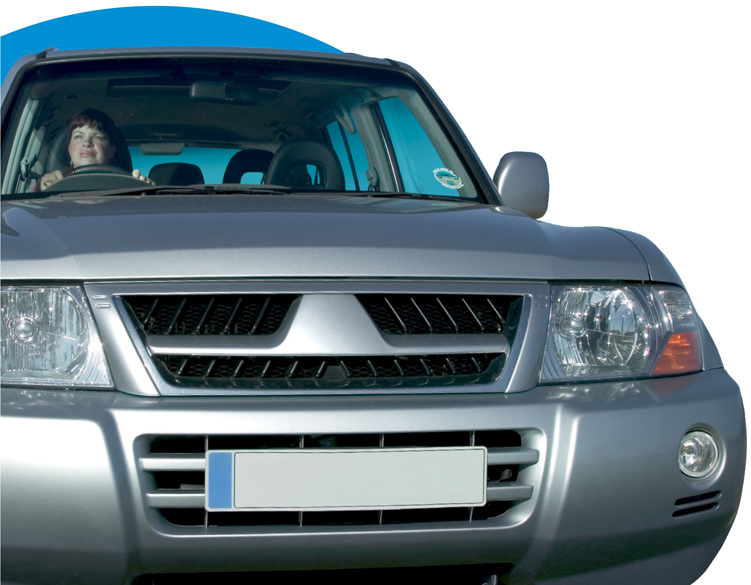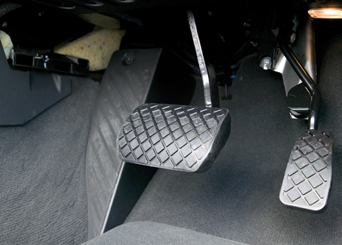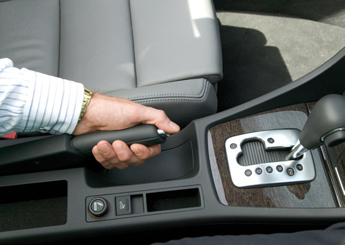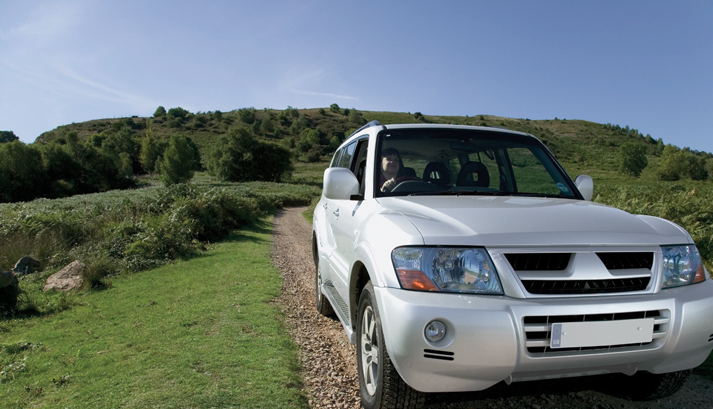This section covers

Vehicles with automatic transmission have always been a great help to drivers with physical disabilities, because there’s less work for the feet and hands to do.
They’ve become increasingly popular with all drivers, not least because of the easier control and convenience they offer, particularly in congested urban conditions.
This section deals with the extra knowledge and skill required when driving vehicles with automatic transmission and four-wheel drive.
Vehicles with automatic transmission have no clutch pedal. The transmission senses and selects the gear according to the road speed and load on the engine. This not only makes the physical job of driving much easier, but it also allows you more time to concentrate on what’s happening on the road.
Automatic transmission usually changes to a higher gear as the road speed increases and to a lower gear as it falls.

It will also change down to a lower gear going uphill as the load on the engine increases.
There are times – for example, when going down a steep hill – when you need to keep in a low gear, even if the speed is constant and the engine load is light. The system often tries to change to a higher gear in these situations. However, the driver is usually able to override the transmission by using the gear selector to remain in a suitable lower gear.
Virtually all automatics have a gear selector. A typical gear selector layout includes
P –(Park) This mechanically locks the transmission and should only be selected when the vehicle is stationary
R –(Reverse)
N –(Neutral) This is the same as neutral on a manual gearbox
D –(Drive) For driving forward
2 –(Second gear)
1 –(First gear).
Some automatics with four forward gears have third gear as an additional position that comes between ‘D’ (drive) and ‘2’ (second gear).
These numbered gear positions enable you to prevent the transmission selecting a higher gear.
This is particularly useful
•in heavy traffic
•when manoeuvring
•when going down a steep hill.
There might be minor variations of the selector positions between different manufacturers.
With any automatic it’s essential to study the vehicle handbook to understand the features of your particular model.
This is a device that provides quick acceleration when you need it; for example, to overtake.
Sharply pressing the accelerator pedal right down causes a quick change down to the next lower gear. To return to the higher gear, ease the pressure off the accelerator pedal.
Fully applying the parking brake whenever your vehicle is stationary is even more important on an automatic.
If the selector lever is in any position other than ‘P’ or ‘N’, it will move off under power if the accelerator is pressed (accidentally or on purpose), unless the brakes are on.
If the choke (manual or automatic) is in use, an even lighter accelerator pressure can move the vehicle away.
Creep happens if the tick-over, or slow running of the engine, creates enough power to move the vehicle. The brakes are necessary to prevent it moving.
Always check your vehicle for a tendency to creep excessively. Do this on the level (not uphill).
Never rely on creep to hold the vehicle on a hill – even though it doesn’t move. The vehicle could roll back without warning if the engine stopped for any reason.
The safe rule is: apply the parking brake fully whenever you pull up.

Make sure you fully understand the procedure required before you attempt to drive a vehicle with automatic transmission.
•Although most automatics have a cut-out switch to prevent starting in gear, always check that the selector is in the ‘P’ (park) or ‘N’ (neutral) position and the parking brake is fully applied.
•For normal forward driving move the selector lever to the ‘D’ (drive) position.
The transmission will then change gear as necessary if there’s enough pressure on the accelerator.
Alternatively, selecting one of the numbered gears will give the same flexibility as a manual gearbox.
Controlled use of the accelerator is essential when driving an automatic as it has such a direct effect when the selector is in any position other than ‘P’ (park) or ‘N’ (neutral).
Avoid heavy acceleration; it can
•cause the vehicle to surge forward (or backwards) out of control
•delay upward gear changes
•waste fuel and pollute the atmosphere.
When carrying out manoeuvres at low speeds, use hardly any accelerator and only light braking; one foot on each pedal is often convenient and safer.
When driving, it’s safer to use the right foot only for both accelerator and brake pedals, just as you do in vehicles with a manual gearbox.
This develops anticipation by encouraging the early release of the accelerator pedal and early and progressive braking.
It cuts out
•the instability and wear and tear brought about by braking against acceleration
•the need to learn a different method if you change from an automatic to a manual or vice versa.
Apart from avoiding the danger of excessive creep you should also
•make sure the tick-over isn’t set too fast. This can make your road speed more difficult to control and you could, for example, find yourself approaching a junction much too fast
•avoid over-confidence and driving too fast for the road and traffic conditions
•be aware of the reduced effect of engine braking on automatics. Use the gear selector to hold a lower gear if necessary
•control your speed as you approach a corner.
Automatics sometimes change up as you approach a corner due to reduced pressure on the accelerator. To avoid this, slow down before you reach the corner then accelerate gently as you turn.
Four-wheel drive (4x4) is an arrangement where both axles of a vehicle are driven. The system may be permanently connected, or drive to the second axle may be selected by the driver to suit the conditions.
Four-wheel drive has become much more widely available. There are three basic groups
•the original type
•the sport type
•the saloon.
The four-wheel drive vehicle was originally a military vehicle for use on rough terrain.
It was built to work in all weather conditions and on difficult surfaces. Vehicles of similar design and layout are now commonly used by farmers, contractors and public service authorities.
The centre of gravity tends to be higher and the wheelbase shorter than those of ordinary vehicles.
You don’t need any extra skill to drive this type of four-wheel drive vehicle on the public road. However, you should be aware when driving these vehicles on public roads, that some 4x4s have very large blind spots which can easily obscure a group of pedestrians, a motorcyclist or even a small car.

Always keep to safe driving principles.
•Remember to take into account the nature of the terrain – be wary on hilly terrain and soft surfaces.
•Don’t overstep your mark, even if your vehicle feels strong enough to handle any difficult contour or surface conditions.
•Take corners at a steady speed. Remember that all the wheels are generally locked into the transmission system and revolve at different speeds. This could affect the stability of the vehicle if driven recklessly.
•Don’t expect the vehicle to do more than it’s capable of.
Look out for rocks that could either damage the underside of your vehicle or suddenly deflect the steering, causing loss of control.
Whatever type of vehicle you drive, if you take part in off-road activities, remember to
•avoid damaging walls, fences, paths, grassland, etc
•take care not to harm livestock or wildlife
•respect the countryside in general
•drive in a responsible manner at all times.
When travelling diagonally downhill, always look for an escape route straight down the slope in case the vehicle strikes any object or if there’s a danger of overturning.
A few saloon cars are now fitted with four-wheel drive. This can be
•an optional extra when buying a new vehicle
•part of the overall design so that sensors in the vehicle’s drive system automatically engage four-wheel drive.
Benefits The main benefit of four-wheel drive in a saloon car is improved traction under all weather or road conditions.
Limitations Saloon cars with four-wheel drive can deal with some off-road conditions.
However, because of low ground clearance they won’t deal with very soft surfaces. Special off-road vehicles have higher ground clearance and, usually, off-road tyres.
The same applies to snow. A four-wheel drive saloon will deal very well with snow up to a certain depth, but not with very deep snow.